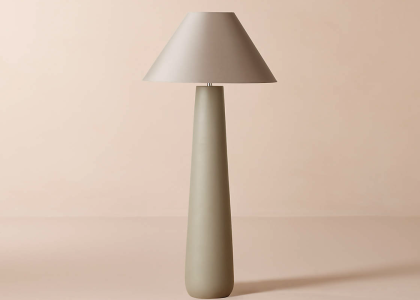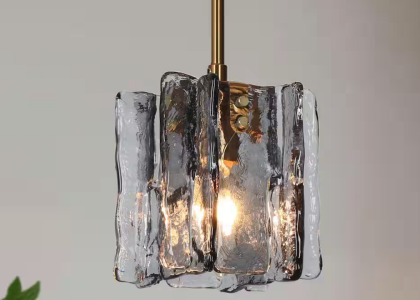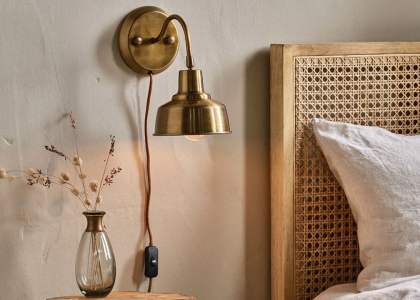Geometric pendant lights have emerged as a striking design element in contemporary interior decor, particularly in kitchens. These fixtures, characterized by their clean lines and bold shapes, serve not only as sources of illumination but also as artistic statements that can elevate the overall aesthetic of a space. The appeal of geometric designs lies in their ability to blend seamlessly with various styles, from modern minimalism to industrial chic, making them versatile choices for homeowners looking to enhance their interiors.
The resurgence of geometric shapes in lighting design can be attributed to a broader trend towards simplicity and functionality in home decor. As people seek to create spaces that reflect their personal style while remaining practical, geometric pendant lights offer a perfect solution. They can be found in a myriad of materials, including metal, glass, and wood, allowing for a wide range of customization options.
This article will delve into the various aspects of geometric pendant lights, focusing on their selection, installation, styles, benefits, maintenance, and current trends.
Choosing the Right Geometric Pendant Light for Your Kitchen
Size Matters
A large pendant can serve as a focal point above an island or dining area, while smaller fixtures may be more appropriate for intimate spaces or areas with lower ceilings. It’s essential to measure the dimensions of your kitchen and the specific area where the light will hang to ensure a harmonious fit.
Style Considerations
Geometric designs can range from sharp-edged cubes and triangles to softer, rounded forms. The choice of shape should complement the existing decor and architecture of your kitchen.
Coordinating with Your Kitchen
For instance, if your kitchen features sleek cabinetry and stainless steel appliances, a metallic geometric pendant with angular lines may enhance that modern aesthetic. Conversely, if your kitchen has rustic elements like wooden beams or farmhouse sinks, a pendant with organic shapes or a combination of materials might create a more cohesive look.
Installation and Placement Tips for Geometric Pendant Lights
Proper installation and placement of geometric pendant lights are vital for achieving both functionality and visual appeal. When hanging a pendant light over a kitchen island or dining table, a general rule of thumb is to position it approximately 30 to 36 inches above the surface. This height allows for adequate illumination while ensuring that the light does not obstruct views or create an overwhelming presence in the space.
In addition to height, the spacing between multiple pendants should also be considered if you opt for a cluster of lights. A common guideline is to leave about 24 to 30 inches between each fixture to maintain balance and symmetry. Furthermore, it’s essential to consider the overall layout of your kitchen when determining placement.
For example, if your kitchen has an open floor plan, strategically placing geometric pendant lights can help define different areas while adding visual interest.
Geometric Pendant Light Styles and Designs
The world of geometric pendant lights is rich with diverse styles and designs that cater to various tastes and preferences. One popular style is the industrial geometric pendant, often characterized by exposed bulbs and raw materials like metal and concrete. These fixtures evoke a sense of urban sophistication and are particularly well-suited for loft-style kitchens or spaces with an industrial theme.
On the other end of the spectrum are more contemporary designs that incorporate sleek lines and innovative materials. For instance, pendants made from glass can create an ethereal quality, especially when combined with LED lighting that enhances their transparency. Additionally, some designers experiment with mixed materials, combining wood with metal or glass to create unique contrasts that draw the eye.
The interplay of different textures and finishes can add depth to your kitchen’s design while maintaining a cohesive look.
Benefits of Using Geometric Pendant Lights in Your Kitchen
Incorporating geometric pendant lights into your kitchen offers numerous benefits beyond mere aesthetics. One significant advantage is their ability to provide focused lighting where it’s needed most. Whether you’re preparing meals or entertaining guests, well-placed pendant lights can illuminate work surfaces effectively while creating an inviting atmosphere.
Moreover, geometric pendant lights can enhance the overall ambiance of your kitchen. The unique shapes and designs can cast interesting shadows and patterns on walls and surfaces, adding an element of dynamism to the space. This play of light can transform an otherwise mundane kitchen into a vibrant area that encourages social interaction and creativity.
Additionally, many geometric pendants are designed with energy-efficient bulbs, contributing to lower energy consumption without sacrificing style.
Maintaining and Cleaning Your Geometric Pendant Light
To ensure that your geometric pendant lights continue to shine brightly and remain visually appealing over time, regular maintenance and cleaning are essential. Dust and grime can accumulate on light fixtures, dulling their finish and reducing their effectiveness. Depending on the material of your pendant light, cleaning methods may vary.
For metal fixtures, a soft cloth dampened with mild soap and water can effectively remove dirt without scratching the surface. For glass pendants, it’s important to use non-abrasive cleaners to avoid damaging the finish. A mixture of vinegar and water can be particularly effective for removing fingerprints and smudges while leaving a streak-free shine.
Additionally, it’s advisable to periodically check the wiring and connections of your pendant lights to ensure they are secure and functioning properly. This proactive approach not only maintains the aesthetic appeal but also ensures safety in your kitchen environment.
Geometric Pendant Light Trends and Inspiration
As design trends evolve, so too do the styles and applications of geometric pendant lights in kitchens. One notable trend is the use of oversized pendants that make bold statements in open-concept spaces. These large fixtures serve as focal points that draw attention while providing ample illumination for expansive areas.
Another emerging trend is the incorporation of smart lighting technology into geometric designs. Many modern pendants now come equipped with adjustable brightness settings or color-changing capabilities that allow homeowners to customize their lighting according to mood or occasion. This integration of technology not only enhances functionality but also aligns with contemporary lifestyles that prioritize convenience and adaptability.
Inspiration for incorporating geometric pendant lights can be found in various design platforms such as Pinterest or Instagram, where interior designers showcase innovative installations in real homes. From minimalist Scandinavian kitchens featuring simple yet striking pendants to eclectic spaces adorned with colorful geometric shapes, there are countless ideas to explore that can help you envision how these fixtures might transform your own kitchen.
Transforming Your Kitchen with a Geometric Pendant Light
The integration of geometric pendant lights into kitchen design represents more than just a trend; it signifies a shift towards creating spaces that are both functional and visually captivating. By carefully selecting the right fixture based on size, style, and placement, homeowners can significantly enhance their kitchen’s ambiance while ensuring practical lighting solutions for everyday tasks. As you explore the myriad options available in geometric pendant lighting—from industrial designs to contemporary innovations—consider how these fixtures can reflect your personal style while serving as essential components of your kitchen’s functionality.
With proper maintenance and an eye on current trends, your geometric pendant light can become a timeless addition that elevates your kitchen’s design for years to come.










